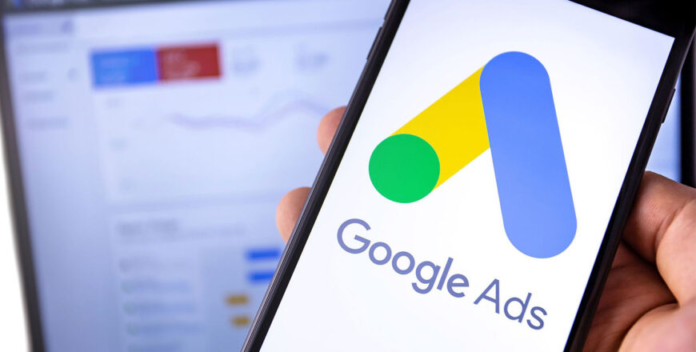In today’s digital landscape, mastering Google Ads is essential for businesses to reach their target audiences and drive conversions effectively. While many marketers have a basic understanding of Google Ads, those who truly excel in this platform often possess advanced learnings and strategies.
What are Advanced Google Ads Learnings?
Mastering Google Ads is an ongoing process. While the fundamentals remain crucial, staying ahead of the curve requires delving into advanced Google ads strategies. Advanced Google Ads learnings go beyond the basics of campaign creation and management, equipping you with the knowledge and techniques to optimize your campaigns for maximum performance. These learnings encompass advanced targeting methods, leveraging automation, utilizing ad extensions, and staying data-driven for continuous improvement.
This blog post unlocks 7 advanced Google Ads learnings that can transform your campaigns from good to great, helping you reach new heights in terms of clicks, conversions, and ROI.
1. Leverage the Power of Audience Targeting:
Going beyond basic demographics, Google Ads empowers you to target audiences based on their interests, purchase intent, and online behavior. Utilize the Customer Match feature to upload your existing customer email lists and target similar audiences. Remarketing lists for search ads (RLSA) allow you to display targeted ads to users who have previously interacted with your website or app, keeping your brand top-of-mind.
Pro Tip: Don’t be afraid to experiment with different audience segments. Analyze the performance of each segment and tailor your bidding strategies and ad copy accordingly.
2. Unlock the Potential of Responsive Search Ads (RSAs):
Gone are the days of crafting multiple ad variations for each ad group. Responsive Search Ads (RSAs) allow you to provide Google with several headlines and descriptions, and the platform automatically tests different combinations to determine the most effective ones. This saves you time and effort while ensuring your ads are constantly optimized for performance.
Example: Imagine you’re running an ad campaign for a local bakery. Instead of creating individual ads, you can provide headlines like “Freshly Baked Bread & Pastries,” “Delicious Cakes for All Occasions,” and “Order Online for Convenient Delivery,” along with descriptions highlighting your unique selling points. Google will then test different combinations to find the most compelling ad for each user.
3. Master the Art of Conversion Tracking:
Effective conversion tracking is essential for measuring the success of your Google Ads campaigns. It goes beyond clicks and website visits, allowing you to track specific actions users take on your website, such as making a purchase, signing up for a newsletter, or downloading a white paper. By understanding which keywords and ad variations drive conversions, you can optimize your campaigns and maximize your return on investment (ROI).
Pro Tip: Don’t limit yourself to basic website conversions. Utilize features like conversion tracking for apps and offline conversion tracking to gain a holistic view of your campaign’s effectiveness.
4. Embrace the Efficiency of Automated Bidding Strategies:
While manual bidding offers granular control, it can be time-consuming to manage. Automated bidding strategies leverage Google’s machine learning algorithms to automatically set bids based on your campaign goals and budget. Choose from options like Target CPA (cost-per-acquisition), Maximize Clicks, or Target Return on Ad Spend (ROAS) to automate the bidding process and potentially achieve better results.
Example: If your goal is to generate leads at a specific cost per lead, setting a Target CPA bidding strategy allows Google to automatically adjust your bids in real time to acquire leads within your target cost range.
5. Refine Your Targeting with Location Extensions and Call Extensions:
Location extensions display your business address and phone number alongside your ads, making it easier for mobile searchers to contact you. Call extensions allow users to call your business directly from the ad, increasing the likelihood of immediate conversions. These extensions are particularly valuable for businesses with a local presence or those offering services that require immediate contact.
Pro Tip: Leverage location targeting features to tailor your ad delivery to specific geographic areas relevant to your business. This ensures your ads are reaching the most relevant audience.
6. Unleash the Power of Google Shopping Ads:
For e-commerce businesses, Google Shopping Ads offers a compelling way to showcase your products directly on Google Search results and partner websites. These visually appealing ads display product images, titles, prices, and merchant ratings, enticing users to click through and explore your offerings.
Example: Imagine you sell handmade jewelry. Setting up Google Shopping Ads allows you to showcase individual product images, titles like “Handmade Silver Necklace,” and competitive prices, potentially driving qualified traffic to your online store.
7. Continuously Monitor and Optimize:
The best Google Ads campaigns are not set-it-and-forget-it endeavors. Regular monitoring and optimization are crucial for sustained success. Utilize Google Ads reporting tools to analyze performance metrics, identify areas for improvement, and make informed adjustments to your campaigns. Regularly test different ad variations, landing pages, and bidding strategies to ensure you’re getting the most out of your budget.
Remember: Google Ads is a dynamic platform, and staying ahead of the curve is key to maintaining successful campaigns. By incorporating these advanced learnings and continuously optimizing your strategies, you can unlock new levels of performance and achieve outstanding results for your business.
Conclusion
Mastering these seven advanced Google Ads learnings can provide a significant competitive advantage in the digital advertising space. From leveraging audience targeting and smart bidding strategies to optimizing landing pages and embracing advanced remarketing tactics, these learnings will enable you to create highly effective campaigns that drive meaningful results. Additionally, implementing advanced tracking and attribution techniques, as well as staying ahead of Google Ads updates and trends, will ensure your campaigns remain relevant and effective in the ever-changing digital landscape. By incorporating these learnings into your advertising efforts, you’ll be well-positioned to maximize your return on investment and outperform your competitors.
For more marketing tactics, insights and updates visit our website Pingtalks!



